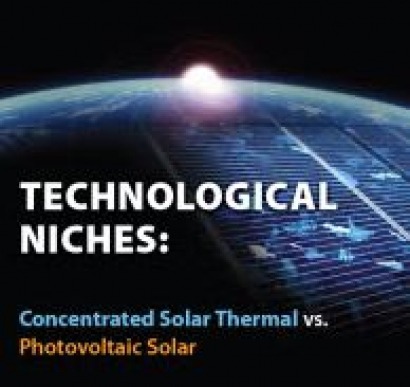
“Solar electricity will be cost-competitive without subsidies within three years,” said Michael Gorton, CEO, PSI. “This paper explains the strengths and weaknesses of CST and PV technology at a time when both are approaching grid-parity power prices in many applications, making this a timely and highly relevant topic.”
Authored by Brett T. Gage, research associate PSI, and Rick Borry, Ph.D., chief technology officer, PSI, the paper discusses the evolution of solar technology and demonstrates how CST and PV solar technology each serve different technological niches.
As of 2012, PV has come to dominate all smaller-scale solar electricity applications, while retaining the majority market share even in commercial and utility-scale applications.
Recently, the US Department of Energy (DOE) announced $20 million in new funding that will help integrate concentrating solar power (CSP) systems with fossil fuel power plants. These hybrid systems leverage the infrastructure of fossil fuel plants such as turbine and transmission systems, helping to reduce the cost of solar-generated electricity and bring CSP plants online quicker.
The paper finds CSP retains a strong niche at the utility-scale and in combined heat and power applications, where no amount of PV cost-reduction is expected to overcome its inherent technology advantages.
“As energy independence and sustainability are becoming formidable issues in the public eye, solar presents itself as a primary solution and can increase its future market share simply by participating in the growth of capacity -- rather than serving as a replacement,” said Dr. Borry. “PV and CST complement each other to meet new demands, and both will increase their share of the electric power market as the world adds new capacity outside of the traditional carbon combustion processes.”
For additional information:

